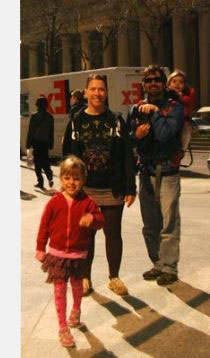December1
Our stay in China has come to an end after 5 months. It has been an interesting and valuable experience. Medically speaking, I feel that the treatments have had some benefits. I did not get the miracle cure that I once may have hoped for, but I found other things. I found out how to better manage my condition; what makes it better and what makes it worse. I found out that I get results when I stick to my regular strengthening exercises, and that when I slack off it shows. I have learned that daily meditation is my greatest ally and that my brain needs to be ‘turned off’ for a while every day. Most importantly, though, is something that I already knew was confirmed; a positive mindset goes a long way to healing and feeling better. When doubt or anger or impatience clouded my mind, I did not show any progressive results. When my thoughts were positive I did. So I am happy to be at more or less a similar state as I was 5 months ago, which in my opinion is a positive when all I have been promised in the West is a steady decline of health. I am continuing my daily herbal tea (or capsules) and hope to continue on this path of positive progression.
Also, it is always worth it. The things that my family and I have experienced, seen, tasted, touched and lived were like no other in our lives. As always, life is an adventure…!

November15
Kathmandu is a feast for the senses. We stayed in the typical backpacker area called Thamel. It is full of places ready to part you and your money. T-shirts, knock-off versions of expensive outerwear, trekking tours, books, teas & spices, incense; whatever you are looking for, it is here.

Thamel at night:

What a crazy place:

There are many, many restaurants to choose from in Kathmandu. We had delicious Thai, Italian, Nepalese, Indian and Mexican food. The desserts weren’t half bad either…

We went to see Nepal’s largest Buddhist Stupa, Boudhanath. A stupa is a mound-like structure containing Buddhist relics, typically the remains of a Buddha or saint. Who is entombed underneath this one has been historically a topic of much debate. It is one of the most holy sites for Buddhists nonetheless. It is surrounded by over 1000 prayer wheels that religious devotees circumnavigate in a clockwise direction rotating each one.

A close-up of the ‘wise eyes’, as Emily calls them (from the book, Ping):

After that we went to a Hindu holy site, Pashupatinath Temple. It is the one of the largest Hindu temples of Lord Shiva in the world located on the banks of the Bagmati River. This river is considered very holy since it flows into the Ganges in India. There is a cremation site on the banks of the river and the deceased are floated down to the awaiting fires on their final journey.

Hindu holy men, or Sadhu:

This one was very flexible:

Hindu widows that did not have children in their marriage end up as Holy ladies:

The next day we visited the ancient city of Bodhnaranth. This was a stop on the old spice and tea trading route between Tibet and India. There is a palace built by King Jitamitra Malla, and various Temples. This king was very vain and jealous. The following beautiful stone carving was so beautiful that the king ordered the artisan’s hands cut off so that he could not create another masterpiece for anyone else. Talk about ingratitude!

The cobras surrounding the king’s outdoor bathing pool, to protect him from evil spirits:

Here are a few of the beautiful buildings:


November11
After we walked across the bridge into Nepal we were greeted by a new guide and driver to take us to Kathmandu. It is only a 150 km drive but it takes 3-4 hours due to the road condition (or lack thereof!). Here is a piece of the ‘better’ looking part of the road, although a waterfall is cascading across it and there is 5 inches of water, it is, at least concrete.

Amazingly, this is the MAIN artery for shipping back and forth from Tibet to Nepal. Apparently there are 3000 of these trucks going back and forth. The road deteriorates to one lane of slimy mud where the mountainside has washed out in many places. Here are some of the trucks waiting to be loaded up or unloaded.

Cars are definitely a luxury item, costing the equivalent of $30,000 for a micro-sized car. So this is how most families travel:

After the long drive, we made it to Kathmandu!




















